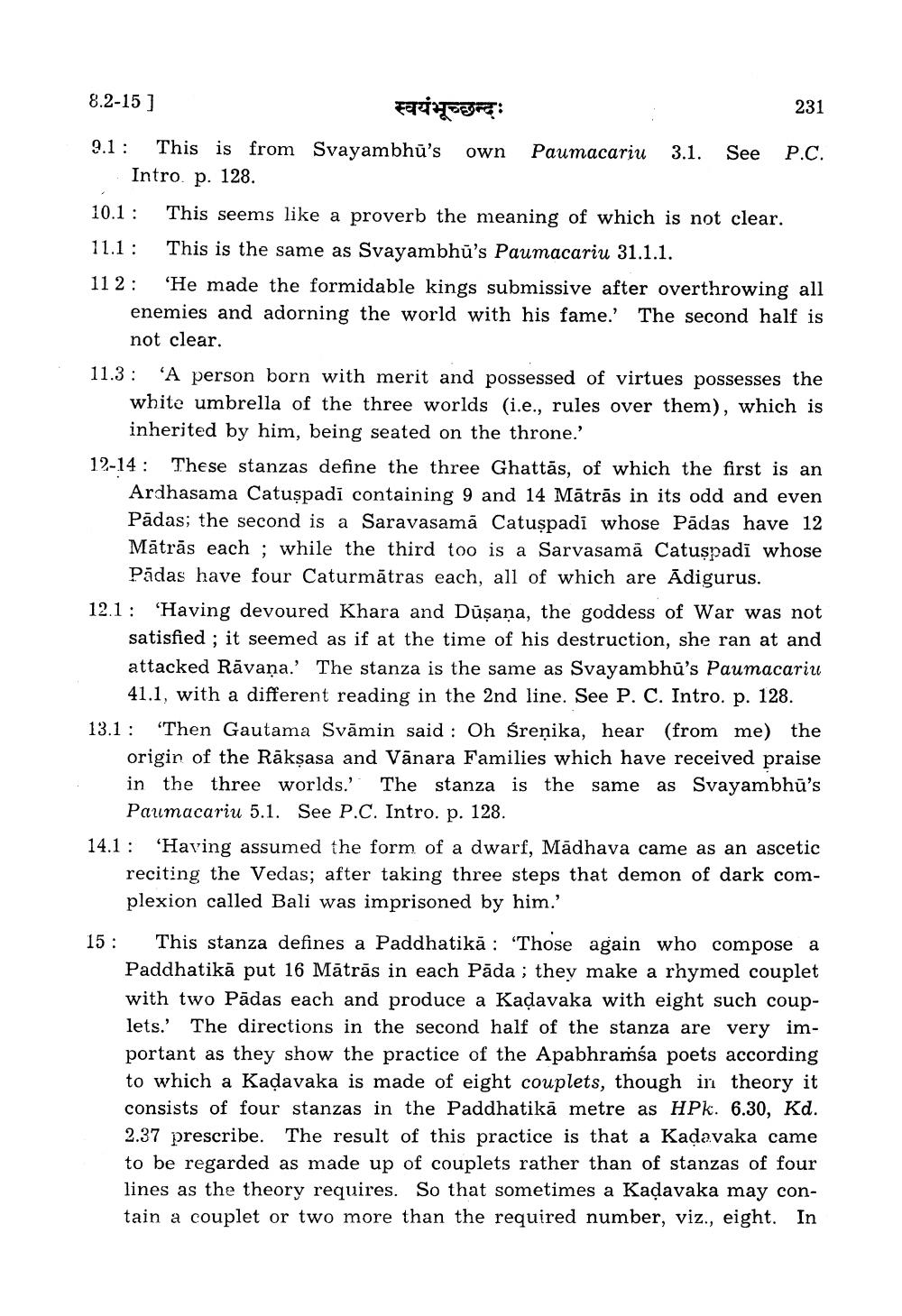________________
231
8.2-15 ]
स्वयंभूच्छन्दः 9.1 : This is from Svayambhu's own Paumacariu 3.1. See P.C.
Intro. p. 128. 10.1: This seems like a proverb the meaning of which is not clear. 11.1: This is the same as Svayambhu's Paumacariu 31.1.1. 112: 'He made the formidable kings submissive after overthrowing all
enemies and adorning the world with his fame.' The second half is
not clear. 11.3: “A person born with merit and possessed of virtues possesses the
white umbrella of the three worlds (i.e., rules over them), which is
inherited by him, being seated on the throne.' 12-14: These stanzas define the three Ghattās, of which the first is an
Ardhasama Catușpadi containing 9 and 14 Mātrās in its odd and even Pādas; the second is a Saravasamă Catuspadi whose Pādas have 12 Mātrās each ; while the third too is a Sarvasamă Catuspadī whose
Pādas have four Caturmätras each, all of which are Adigurus. 12.1: 'Having devoured Khara and Dūşana, the goddess of War was not
satisfied ; it seemed as if at the time of his destruction, she ran at and attacked Rāvana.' The stanza is the same as Svayambhu's Paumacariu
41.1, with a different reading in the 2nd line. See P. C. Intro. p. 128. 13.1: "Then Gautama Svāmin said : Oh Śrenika, hear (from me) the
origin of the Rāksasa and Vānara Families which have received praise in the three worlds. The stanza is the same as Svayambhū's
Paumacariu 5.1. See P.C. Intro. p. 128. 14.1: 'Having assumed the form of a dwarf, Madhava came as an ascetic
reciting the Vedas; after taking three steps that demon of dark complexion called Bali was imprisoned by him.'
15 : This stanza defines a Paddhatikā : 'Those again who compose a
Paddhatikā put 16 Mātrās in each Päda; they make a rhymed couplet with two Pādas each and produce a Kadavaka with eight such couplets.' The directions in the second half of the stanza are very important as they show the practice of the Apabhramśa poets according to which a Kadavaka is made of eight couplets, though in theory it consists of four stanzas in the Paddhatikā metre as HPk. 6.30, Kd. 2.37 prescribe. The result of this practice is that a Kadavaka came to be regarded as made up of couplets rather than of stanzas of four lines as the theory requires. So that sometimes a Kadavaka may contain a couplet or two more than the required number, viz., eight. In




